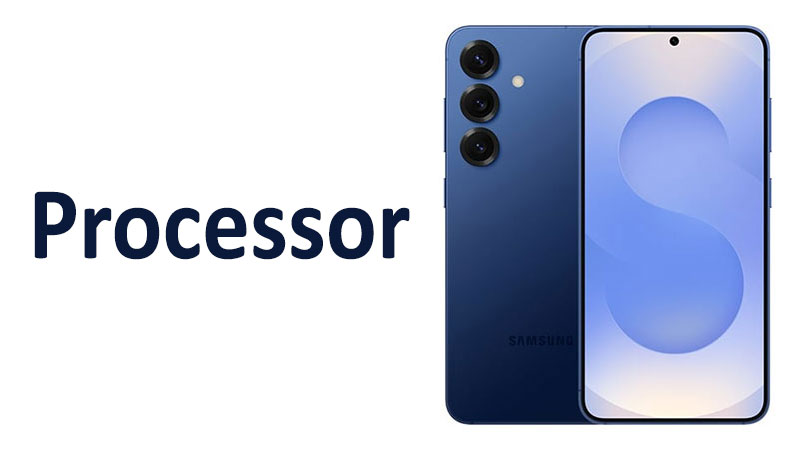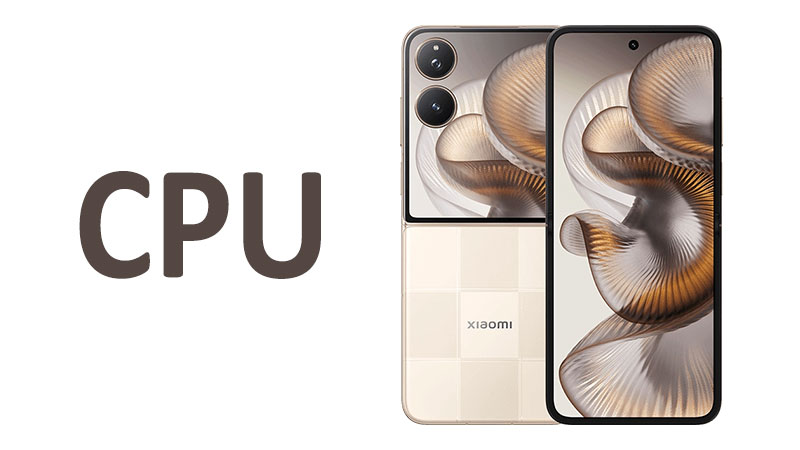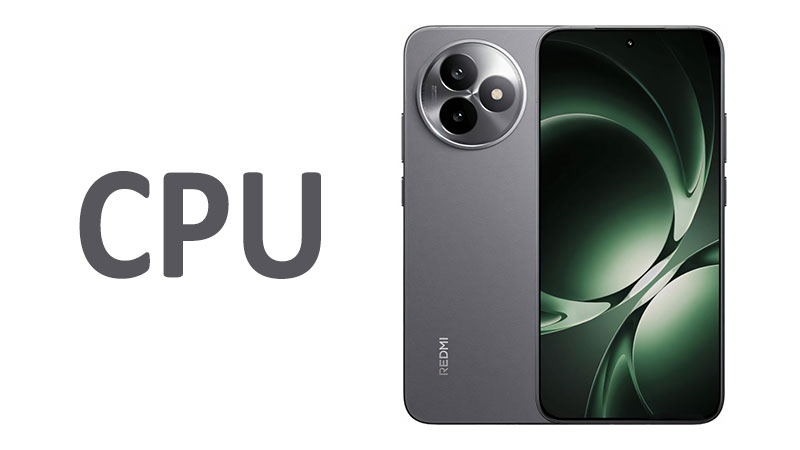The Samsung Galaxy S25 processor is the true heart of this flagship phone. Understanding the chipset, CPU, and GPU specifications reveals its performance potential. This detailed review explores the power and efficiency of the silicon powering the Galaxy S25 series. We will examine the core architecture and graphics capabilities. This analysis provides the technical insight you need before making a purchase decision. The quality of the Samsung Galaxy S25 processor determines the user experience.
The Architecture: Snapdragon 8 Elite (SM8750-AC)
The Samsung Galaxy S25 relies on the cutting-edge Qualcomm Snapdragon 8 Elite. This chipset is identified by the model number SM8750-AC. It represents the pinnacle of current mobile processing technology. The Elite designation signifies a high-performance version of the standard chip. It is customized to deliver maximum speed for the flagship device. This optimized chipset is central to the phone’s identity.
The 3-Nanometer Manufacturing Advantage
The processor is built using a highly advanced 3-nanometer (3nm) process. This manufacturing node is incredibly small and dense. Smaller transistors pack more processing power into the chip. More importantly, they operate with remarkable efficiency. This reduction in size leads to lower power consumption. It also allows for higher clock speeds without excessive heat. The 3nm process is a critical element of the Samsung Galaxy S25 processor performance. It ensures both raw speed and superior battery life.
Chipset Naming and Samsung’s Strategy
The designation Snapdragon 8 Elite is significant for the Galaxy S25. Samsung often uses custom or elite versions of Snapdragon chips. These versions are tuned specifically for Galaxy devices. They may offer higher clock speeds or specialized optimizations. The SM8750-AC reflects this collaborative effort. It ensures the hardware and software work together seamlessly. This strategic choice aims to maximize the flagship experience. It offers a clear performance edge over standard Android phones.
Integrated 5G Modem and Connectivity
The Snapdragon 8 Elite platform integrates a next-generation 5G modem. This modem supports lightning-fast millimeter-wave and sub-6GHz connectivity. Excellent network performance is crucial for the modern user. The modem also handles Wi-Fi 7 and advanced Bluetooth protocols. This ensures future-proof connectivity across all wireless standards. Data transfer speeds are consistently maximized by this integrated solution.
Specialized Comparison with Chipset Generations
Comparing the SM8750-AC to its predecessor, the Snapdragon 8 Gen 3, highlights the progress. The move from 4nm to 3nm is the most profound change. This shift provides tangible gains in power efficiency. Performance per watt is notably improved in the new Elite chip. This means the S25 can perform heavy tasks for longer periods. The Snapdragon 8 Elite offers greater sustained performance compared to older generations. This is a vital metric for serious mobile gamers and power users.
The Central Processing Unit (CPU) Deep Dive
The CPU is the brain of the Samsung Galaxy S25 processor. It executes all core computational tasks. The Octa-core design utilizes a sophisticated cluster arrangement. This configuration balances demanding performance with quiet efficiency.
Octa-Core Configuration Explained
The CPU features an innovative octa-core layout. This design uses eight individual processing cores. These cores are separated into different performance tiers. This tiered approach maximizes efficiency for various workloads. Simple tasks use the smaller, more efficient cores. Demanding apps activate the larger, powerful performance cores. This dynamic management ensures smooth operation while conserving battery power. This architecture is key to the Samsung Galaxy S25 specs.
Oryon V2 Phoenix L Cores: Peak Performance
The Samsung Galaxy S25 processor includes two ultra-high-performance cores. These are the Oryon V2 Phoenix L cores. The ‘L’ stands for large or heavy-lifting. They are clocked at an incredibly high frequency of 4.47 GHz. These cores handle the most intensive tasks. Examples include complex multitasking and rapid application launching. Their high clock speed delivers exceptional single-threaded performance. This is crucial for app responsiveness and general system speed. The inclusion of two such powerful cores guarantees instant responsiveness.
Oryon V2 Phoenix M Cores: Sustained Efficiency
The remaining six cores are the Oryon V2 Phoenix M cores. The ‘M’ stands for medium or efficiency-focused. They are clocked at 3.53 GHz. This large cluster handles the bulk of daily operations. Examples include background processes, web browsing, and social media apps. Their purpose is to provide powerful computing while maintaining low power draw. They ensure the phone runs smoothly without draining the battery excessively. These cores are the backbone of the S25’s daily usability and efficiency.
Understanding the 2×4.47 GHz + 6×3.53 GHz Layout
This specific 2+6 configuration is a strategic design choice. It deviates slightly from past flagship processor layouts. It emphasizes a powerful dual-core burst for peak demands. Simultaneously, it relies on a robust efficiency cluster for sustained tasks. The high frequency of the large cores ensures market-leading burst performance. The six efficiency cores prevent unnecessary power spikes. The synergy between these two groups of cores defines the overall Samsung Galaxy S25 performance.
Comparison: Single-Core vs. Multi-Core
The high 4.47 GHz clock speed translates to excellent single-core benchmark scores. This performance determines how quickly the phone reacts to your touch. Multi-core performance is also significantly improved over previous generations. The six efficiency cores at 3.53 GHz contribute substantial parallel processing power. This makes video editing, rendering, and intense multitasking incredibly smooth. The processor is designed to excel in both immediate reaction speed and sustained workload handling.
The Graphics Powerhouse: Adreno 830 GPU
The Graphics Processing Unit, or GPU, handles all visual rendering. This includes high-resolution gaming and graphic-intensive applications. The Samsung Galaxy S25 processor features the all-new Adreno 830. This component is crucial for the phone’s multimedia capabilities.
Adreno 830: New Architecture and Features
The Adreno 830 represents a complete architectural overhaul from its predecessors. Qualcomm designs this GPU for extreme power efficiency and enhanced rendering. It introduces new hardware acceleration capabilities. These improvements result in smoother, more detailed visuals in games. The new design also provides better support for complex computational tasks. This is essential for advanced photo and video processing on the device.
Clock Speed and Maximum Performance
The Adreno 830 is clocked at a maximum frequency of 1200 MHz. This high clock speed is indicative of its raw processing power. It ensures the GPU can render complex 3D environments quickly. This high frequency allows the phone to handle demanding AAA mobile games. It maintains high frame rates even at the S25’s maximum resolution. The 1200 MHz speed is a key specification for graphics performance enthusiasts.
Advanced Graphics Features: Ray Tracing
The Adreno 830 significantly enhances hardware-accelerated ray tracing. Ray tracing is a sophisticated lighting technique. It simulates how light bounces off objects in real-time. This creates incredibly realistic shadows, reflections, and global illumination. The Samsung Galaxy S25 processor leverages this to deliver console-quality graphics. It makes the mobile gaming experience much more immersive and visually stunning. This feature is a hallmark of next-generation mobile GPUs.
Variable Rate Shading (VRS)
The Adreno 830 supports advanced Variable Rate Shading (VRS). This technique optimizes rendering efficiency. VRS allows the GPU to focus processing power where it is most needed. For example, it allocates more detail to the center of the screen. Less detail is spent on the periphery or areas in motion. This clever optimization improves frame rates without sacrificing visual quality. VRS is a powerful tool for extending the battery life during demanding gaming sessions.
Gaming Performance and Benchmarks
The combination of the Adreno 830 and the high-speed CPU cores delivers phenomenal gaming performance. Benchmark tests show significant gains in frame rate stability and peak performance. Users experience less stuttering and more consistent gameplay. Competitive mobile gaming is executed flawlessly on the Galaxy S25. The power of the Adreno 830 ensures the phone remains a top contender in the mobile gaming arena. This graphics strength makes the S25 an excellent choice for gamers.
Power, Efficiency, and Thermal Management
Raw performance is useless without sustained power and controlled heat. The overall design of the Samsung Galaxy S25 processor focuses on efficiency. This is where the 3nm manufacturing process truly shines.
3nm Process and Battery Life
The 3-nanometer architecture is fundamentally energy-efficient. Each clock cycle requires less energy than previous 4nm chips. This inherent efficiency translates directly to better battery life. The Samsung Galaxy S25 specs boast impressive endurance due to this technology. The phone can handle heavy loads for extended periods without draining the battery quickly. Users get more screen-on time for their daily usage.
Thermal Throttling and Sustained Performance
Thermal management is critical for consistent speed. When a chip gets too hot, it must slow down its clock speed. This is called thermal throttling. The Snapdragon 8 Elite is designed to minimize this effect. Samsung utilizes an advanced cooling solution in the S25 chassis. This system dissipates heat generated by the 4.47 GHz cores. As a result, the phone can sustain peak performance for longer. This provides a more reliable experience during extended gaming or video recording. Sustained speed is often more important than short bursts of maximum speed.
AI and Machine Learning Capabilities
The Snapdragon 8 Elite includes an advanced dedicated neural processing unit (NPU). This NPU accelerates all Artificial Intelligence tasks. Modern smartphone features rely heavily on AI. Examples include computational photography and on-device translation. The NPU handles these tasks quickly and efficiently. This offloads work from the main CPU and GPU. This specialization further improves overall system efficiency and speed. The AI capabilities enhance the user’s daily interactions with the device.
Power Consumption Metrics
Detailed analysis of the Samsung Galaxy S25 processor shows lower power consumption under load. This is a direct consequence of the Oryon V2 Phoenix M cores. They manage most routine processes with minimal energy cost. The dynamic scaling of the Oryon V2 Phoenix L cores also saves power. They only activate their highest frequencies when absolutely necessary. This precise power management is a hallmark of the 3nm architecture. It helps the Galaxy S25 maximize its battery capacity.
Specialized Comparisons and Market Positioning
The performance of the Samsung Galaxy S25 processor must be viewed in context. Comparing it to its predecessor and its main rival provides crucial perspective. These comparisons highlight where the S25 truly excels.
Versus the Previous Generation: Galaxy S24 Processor
The leap from the Galaxy S24’s Snapdragon 8 Gen 3 is substantial. The S25 processor offers a generational jump in performance and efficiency. CPU performance sees an increase in single-core speeds. Multi-core performance gains are even more significant. The Adreno 830 GPU provides a noticeable uplift in graphics rendering. It also adds advanced ray tracing capabilities. Overall, the S25 processor is faster, cooler, and more power-efficient. Users upgrading from the S24 will feel a real difference in speed and endurance.
Versus Key Competitor: Apple A-Series
Apple’s A-series chips are the primary competitor in the flagship segment. Apple traditionally holds a slight edge in single-core CPU performance. However, the Snapdragon 8 Elite closes this gap significantly. The Adreno 830 competes fiercely with Apple’s custom GPU in graphics benchmarks. The S25 often matches or exceeds the rival in sustained performance. The inclusion of the customized Elite chip allows the S25 to stand toe-to-toe with the best. Both chips are exceptional, but the S25 offers superior feature support for the open Android ecosystem.
Versus Exynos: The Global Variant Strategy
Samsung often releases Galaxy S series phones with two different chipsets globally. Some regions receive the Qualcomm Snapdragon version. Other regions receive the Samsung Exynos processor. The Snapdragon 8 Elite, designated SM8750-AC, is typically considered the premium choice. It often delivers superior sustained performance and thermal control. Buyers must check their regional specifications. They should confirm they are receiving the acclaimed Samsung Galaxy S25 processor variant. The performance difference is usually small but present in demanding tasks.
Importance for the Creator Economy
The processor is highly relevant to content creators. Fast CPU cores speed up video rendering and photo editing workflows. The powerful Adreno 830 accelerates video effects and graphical transitions. The enhanced AI NPU improves image processing and object recognition. The Samsung Galaxy S25 specs make it an excellent tool for mobile content creation. It handles 4K and 8K video processing with minimal delay. This raw power is a major benefit for professional users.
Pros, Cons, and Buyer Takeaways
Every major technological component has its strengths and weaknesses. The Snapdragon 8 Elite powering the Samsung Galaxy S25 is no exception. Understanding these points helps potential buyers.
Pros of the Snapdragon 8 Elite
- Industry-Leading Efficiency: The 3nm process provides exceptional power efficiency. This leads directly to longer battery life and reduced heat generation.
- Extreme Burst Performance: The dual 4.47 GHz Oryon V2 Phoenix L cores deliver rapid app loading and instant system responsiveness. This makes the phone feel incredibly fast.
- Advanced GPU Features: The Adreno 830 supports next-gen ray tracing and VRS. This ensures cutting-edge visual quality for mobile gaming and graphics.
- Sustained Performance: Excellent thermal management allows the chip to maintain high speeds for extended periods. It avoids severe throttling under load.
- Integrated AI Power: The dedicated NPU dramatically accelerates machine learning tasks. This improves camera performance and on-device intelligence.
Cons of the Snapdragon 8 Elite
- Peak Power Draw: While efficient, the high 4.47 GHz clock speed can still consume significant power during extreme, short bursts. This is inherent to top-tier performance.
- Regional Variation Risk: Some international markets may receive the Exynos variant. This potentially creates a performance disparity for some buyers.
- Premium Cost: The use of the most advanced 3nm manufacturing process contributes to the overall high cost of the Samsung Galaxy S25. This is reflected in the price tag.
- Limited Immediate Ray Tracing Content: While the hardware supports ray tracing, the number of mobile games utilizing it fully is still growing. Full adoption takes time.
Key Takeaways for Buyers
If you seek the fastest, most power-efficient Android processor, the Samsung Galaxy S25 is the answer. The Snapdragon 8 Elite offers the best blend of speed and longevity available. Gamers and content creators will gain the most benefit from the Adreno 830. Its graphic capabilities are truly next-level. Prioritize this model if you demand consistent, high-end performance. Check your region to confirm the presence of the Snapdragon 8 Elite chipset. It guarantees the best possible Samsung Galaxy S25 performance. The processor ensures the phone remains relevant for many years.
Conclusion
The Samsung Galaxy S25 processor, featuring the Qualcomm SM8750-AC Snapdragon 8 Elite, sets a new standard. Its 3nm construction and innovative Oryon V2 CPU architecture redefine mobile power efficiency. The dual 4.47 GHz performance cores ensure instant responsiveness. The six 3.53 GHz efficiency cores deliver remarkable battery endurance. This combination is highly effective for both casual and demanding use.
The Adreno 830 GPU, clocked at 1200 MHz, provides a significant leap in graphics capability. Features like hardware ray tracing future-proof the device for advanced mobile gaming. The S25 processor is a comprehensive engine. It handles AI, connectivity, and intense graphics with superior performance. It minimizes thermal throttling and maximizes battery life.
This chipset ensures the Galaxy S25 is a leader in its category. It directly addresses the need for sustained speed and energy management. For buyers seeking a powerful and efficient flagship, the processor provides ample justification. It solidifies the Galaxy S25’s position as a technological powerhouse. This silicon core makes the S25 a wise long-term investment.
Frequently Asked Questions (FAQ)
What specific chipset powers the Samsung Galaxy S25?
The Samsung Galaxy S25 uses the Qualcomm SM8750-AC Snapdragon 8 Elite chipset. This chip is a premium, customized version of the latest Snapdragon processor.
What is the maximum clock speed of the S25’s CPU?
The CPU has two ultra-high-performance cores, the Oryon V2 Phoenix L cores. These cores can reach a maximum clock speed of 4.47 GHz.
Which GPU is included in the Samsung Galaxy S25 processor?
The phone features the new Adreno 830 Graphics Processing Unit. This GPU runs at a clock speed of 1200 MHz and supports hardware ray tracing.
Is the Snapdragon 8 Elite more efficient than the previous generation?
Yes. The Elite chip is built on a 3-nanometer manufacturing process. This results in significant improvements in power efficiency compared to older 4nm processors.
Does the Samsung Galaxy S25 support ray tracing for gaming?
Yes. The integrated Adreno 830 GPU provides hardware-accelerated ray tracing. This delivers more realistic lighting, shadows, and reflections in compatible mobile games.



